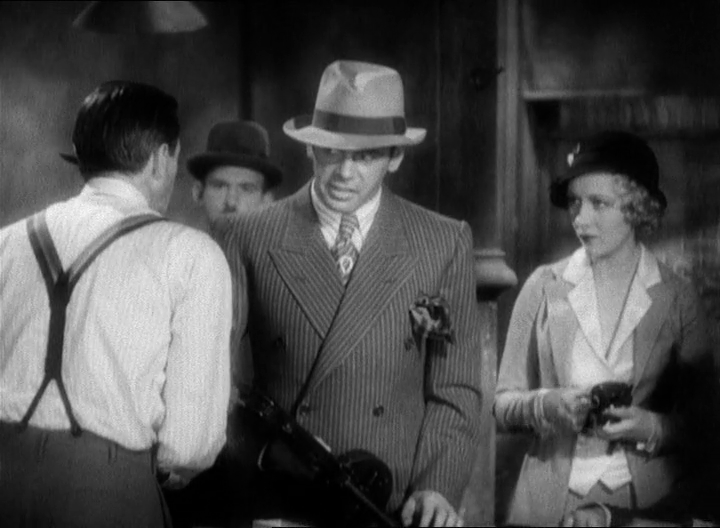A Century of Film is Devin Wilger’s attempt to watch a movie from each year between 1917 and today. The film for 1932 is Scarface.
The people behind the camera of Scarface knew they would be accused of glorifying violence. Perhaps they were told by the censors, perhaps they deduced it on their own, but the film responds to criticism by throwing in an opening text crawl lamenting gang violence in America and demanding government intervention, throwing in scenes where police officers lament all the death and destruction that gang violence causes, and including a fiery speech about why gun control is necessary right after an extended and quite exciting sequence involving drive-by shootings with machine guns.
That all of these sequences could be edited out completely without changing the plot in any meaningful way suggests that they might have been crammed in later, a pre-emptive response to the moral authority that would eventually force the motion picture production code on American films. If anything, Scarface is the exact type of film that would cause the clutching at pearls that lead to the code’s overbearing influence on American film, and all the crammed in fiery speeches in the world don’t change that.
Another reason why the film could be easily accused of glorifying gang life is that our lead actor, Paul Muni, is incredibly charismatic. He’s strange looking, with the cross-shaped scar on his cheek, the weird haircut, his oddly proportioned face, but he’s also incredibly charming in the role. His character, an ambitious gangster out to murder his way to the top of the pecking order, is not a good person. But he’s a likable person, and you understand why Poppy (Karen Morley) falls for him, why his lieutenants are loyal to him, why his boss Johnny Lovo (Osgood Perkins) both trusts him and feels threatened by him.
The other reason why the attempts at a moral don’t work is that his downfall is from something personal, not criminal. A subplot running through the film involves Scarface being highly protective of his sister Cesca (Ann Dvorak), to the point where he doesn’t want her to be anywhere or do anything with a man, with inevitable results. When the murders are impersonal, it’s just business, but when they start to be crimes of passion that’s what takes the man down. Outside of the fiery speeches the film seems to say that if you’re going to kill someone, it had better be for purely practical reasons.
And if you’re going to kill someone, make it artfully shot too. Every murder is marked with an X - to the point where it becomes almost a game to find the X during a death scene - and director Howard Hawks has a habit of doing the actual killing in shadows, or cutting away to something that provides punctuation. Boris Karloff’s rival gang leader bowls his last strike, for example. The opening of the film, a long take following a janitor cleaning up after a party before he stumbles onto a gangland murder and, tactfully, decides it would be best not to get involved, has the murder itself depicted with the gunman in shadow and the victim off screen entirely. Death is about the absence of the deceased, not the actual act of murder.
As a film about the mafia, and mostly Italian mobsters in Chicago, it is English mostly in theory. The thick veneer of regionalisms and accents - some real, some comically exaggerated - often make it hard to tell what exactly people are talking about. There are enough context clues that it’s easy to figure out, but the dialog can be totally incomprehensible if you’re not following closely.
Scarface, for all of the film’s own objections, does make violence look fun. But so do lots of films, the entire action genre is founded on the idea that car chases, explosions and gunfire are inherently cool. It stands out more here because it’s trying so hard to deny that all this violence is a blast. But it’s not the violence that’s the best part of the film, instead it’s the lead character himself. Paul Muni’s charisma pushes through and makes the character someone whose popularity you understand. He’s not a good person, but he’s a fascinating one.
Nobody left the theatre in 1932 ready to write a letter to their congressman demanding gun control or increased police budgets. They did likely leave the theatre satisfied though, because when it’s not trying to convince you that the violence you’re enjoying is a bad thing, it is delivering some enjoyable violence.
Next up, something a bit sillier, with the Marx Brothers in Duck Soup.



